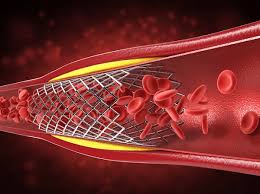ESC Congress 2024 Highlights the Crucial Role of Smoking Cessation in Reducing Cardiovascular Risk
Patients with stable coronary artery disease who quit smoking can reduce their risk of major cardiovascular events by nearly 50%, according to new research presented at the ESC Congress 2024. In contrast, merely reducing the number of cigarettes smoked offers minimal benefit in lowering cardiovascular risk, underscoring the importance of complete smoking cessation.
Key Findings from the CLARIFY Registry
The study drew on data from the CLARIFY registry, an international observational study that included 32,378 patients diagnosed with stable coronary artery disease. The registry analyzed the impact of smoking status on the occurrence of major adverse cardiovascular events (MACE), defined as cardiovascular death or myocardial infarction, over a five-year follow-up period.
Participants were included in the study an average of 6.5 years after their coronary artery disease diagnosis. At the time of their inclusion, 41.3% had never smoked, 46.2% were former smokers, and 12.5% were current smokers. Of the former smokers who had smoked at the time of their diagnosis, 72.8% quit within the first year, while the remaining 27.2% quit later.
The Crucial First Year: A Window of Opportunity
The research highlighted the first year after diagnosis as a critical period for smoking cessation. Dr. Jules Mesnier, the study’s lead author from Hospital Bichat-Claude Bernard in Paris, emphasized the importance of quitting smoking as soon as possible after a coronary artery disease diagnosis.
“At the time of diagnosis, we should emphasize the importance of quitting and support patients in this challenge,” Dr. Mesnier stated. The study found that patients who quit smoking at any time after their diagnosis experienced a 44% reduction in the risk of major cardiovascular events (adjusted hazard ratio [HR] 0.56; 95% confidence interval [CI] 0.42–0.76; p<0.001).
Long-term Benefits of Smoking Cessation
The study also revealed that while smokers who reduced their cigarette consumption did not significantly lower their risk of MACE compared to those who continued smoking, each additional year of smoking post-diagnosis increased the risk of MACE by 8% (adjusted HR 1.08; 95% CI 1.04–1.12 per year).
Importantly, even after years of smoking cessation, former smokers never fully achieved the cardiovascular risk level of those who had never smoked. However, the significant reduction in MACE risk among those who quit smoking demonstrates the substantial benefits of smoking cessation at any stage.
Powerful Messages for Patient Care
Dr. Mesnier concluded, “It is never too soon or too late to stop smoking, though the sooner a patient stops, the better to lower cardiovascular risk. And it is not enough to reduce smoking. Short, clear messages are needed for smokers at every medical intervention highlighting the need to quit. Telling patients they can cut their risk of a subsequent major event or death by half – as we have shown here – is a powerful message.”
The study reinforces the need for healthcare providers to promote smoking cessation through brief advice, counseling, behavioral interventions, and pharmacological therapy, especially during the crucial first year after a coronary artery disease diagnosis. This approach can significantly reduce the risk of life-threatening cardiovascular events and improve long-term outcomes for patients.












